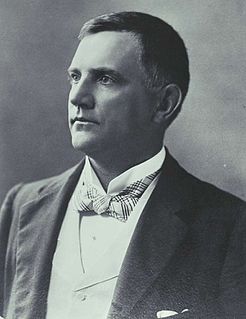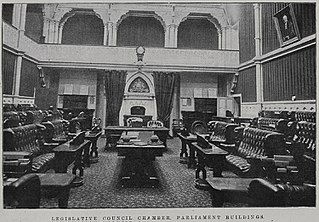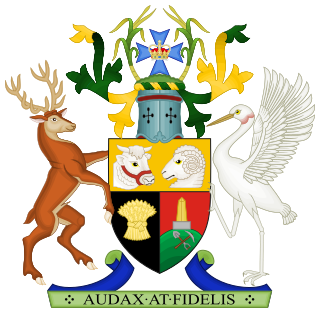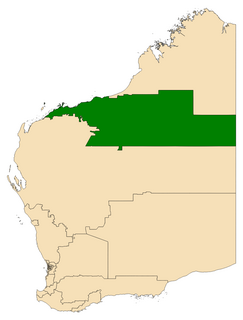Sources
- Black, David (1991). Legislative Council of Western Australia : membership register, electoral law and statistics, 1890-1989. Perth: Parliamentary History Project. ISBN 0-7309-3641-4.
This is a list of members of the Western Australian Legislative Council from December 1890 until July 1894.
Prior to the passage of the Constitution Act 1889 , Western Australia had a partly elected and partly nominated Legislative Council. The Act created a fully elective Western Australian Legislative Assembly as a separate house, and a 15-seat Council whose members were nominated by the Governor of Western Australia. It was anticipated by Part III of the Constitution that the Council would remain purely nominative until the colony had reached a population of 60,000—seen as a distant goal with an 1888 population of 43,814 and the levelling off of earlier growth. However, due to the gold rush which saw thousands of people migrate from other Australian colonies and from overseas, the population reached 64,923 by 31 December 1893. The Constitution Act Amendment Act 1893 was passed to transform the Council into an elective house of 21 members on a restricted franchise, effective from the 1894 elections.
| Name | Date appointed | Date ceased |
|---|---|---|
| Josceline Amherst | 24 December 1890 | 16 July 1894 |
| Harry Anstey | 23 August 1893 | 16 July 1894 |
| Edmund Ralph Brockman | 24 December 1890 | 9 December 1891 (resigned) |
| Thomas Burges | 24 December 1890 | 7 August 1893 (died) |
| Robert Edwin Bush | 24 December 1890 | 17 July 1893 (resigned) |
| Hon Sir Thomas Cockburn-Campbell | 24 December 1890 | 27 September 1892 (died) |
| Daniel Keen Congdon | 8 March 1892 | 16 July 1894 |
| George Glyde | 8 March 1892 | 16 July 1894 |
| McKenzie Grant | 24 December 1890 | 17 July 1893 (resigned) |
| John Winthrop Hackett | 29 December 1890 | 16 July 1894 |
| Edward Hamersley | 24 December 1890 | 16 July 1894 |
| Richard Watson Hardey | 31 December 1890 | 16 July 1894 |
| John Hassell | 3 August 1893 | 16 July 1984 |
| Edward Hooley | 12 December 1891 | 16 July 1894 |
| George Walpole Leake | 24 December 1890 | 16 July 1894 |
| John Monger | 24 December 1890 | 23 February 1892 (died) |
| William Dalgety Moore | 24 December 1890 | 4 February 1892 (resigned) |
| James Morrison | 24 December 1890 | 16 July 1894 |
| Stephen Henry Parker | 11 October 1892 | 16 July 1894 |
| George Randell | 17 July 1893 | 16 July 1894 |
| Sir George Shenton | 24 December 1890 | 16 July 1894 |
| John Arthur Wright | 24 December 1890 | 16 July 1894 |

George Leake was the third Premier of Western Australia, serving from May to November 1901 and then again from December 1901 to his death.

The Western Australian Legislative Assembly, or lower house, is one of the two chambers of the Parliament of Western Australia, an Australian state. The Parliament sits in Parliament House in the Western Australian capital, Perth.

The New Zealand Legislative Council existed from 1841 until 1951. When New Zealand became a colony in 1841 the Legislative Council was established as the country's first legislature; it was reconstituted as the upper house of a bicameral legislature when New Zealand became self-governing in 1852.

Harry Francis Anstey was a metallurgist and gold prospector who led the prospecting expedition that discovered gold in the Yilgarn, leading to the gold rush that established Western Australia's Eastern Goldfields.

The Western Australian Legislative Council is the upper house of the Parliament of Western Australia, a state of Australia. It is regarded as a house of review for legislation passed by the Legislative Assembly, the lower house. The two Houses of Parliament sit in Parliament House in the state capital, Perth.

Edward Hamersley was a Western Australian pastoralist, and a Member of the Western Australian Legislative Council for nearly ten years.

The Queensland Legislative Council was the upper house of the parliament in the Australian state of Queensland. It was a fully nominated body which first took office on 1 May 1860. It was abolished by the Constitution Amendment Act 1921, which took effect on 23 March 1922.

Sir George Shenton was a prominent businessman in colonial Western Australia, the first Mayor of Perth, and a Member of the Western Australian Legislative Council for over thirty years.

The Electoral district of Pilbara is a Legislative Assembly electorate in the state of Western Australia. Pilbara is named for the region of Western Australia in which it is located. It is one of the oldest electorates in Western Australia, with its first member having been elected to the Second Parliament of the Legislative Assembly at the 1894 elections.
Charles Edward Dempster was a politician in Western Australia, serving two terms in the Legislative Council—as the member for the seat of Toodyay from 1873 to 1874, and as one of the three East Province members from 1894 until 1907. A farmer and grazier by trade, he was also one of the first European explorers of the Esperance district as well as a councillor and chairman on the Toodyay and Northam Road Boards for many years.
This is a list of members of the Western Australian Legislative Assembly between the 1890 elections and the 1894 elections, known as the First Parliament. They held office under the Constitution Act 1889, which was given royal assent by Queen Victoria on 15 August 1890 and took effect on 21 October 1890 with a proclamation by the new Governor of Western Australia, Sir William Robinson.
Elections were held in the state of Western Australia between 27 April and 26 May 1897 to elect 44 members to the Western Australian Legislative Assembly. The Ministerialist group led by John Forrest won a third term in office as a result of the elections. The poll took place based on boundaries established in the Constitution Act Amendment Act 1896, which increased the number of members from 33 mainly by adding new seats in the Goldfields region, and had been called a year earlier than was necessary. In 18 of the 44 seats, only one candidate nominated and polls were not held.
This is a list of members of the Western Australian Legislative Council from 16 July 1894 to 27 July 1896. The chamber had 21 seats made up of seven provinces each electing three members, on a system of rotation whereby one-third of the members would retire at each biennial election. As this was the first election of the Legislative Council under responsible government in Western Australia, following the passage of the Constitution Act Amendment Act 1893, all seats were vacant at the time of the election, and therefore the candidate with most votes in each province was elected for six years, the second-most for four years and the third-most for two years.
This is a list of members of the Tasmanian House of Assembly between the 1893 election and the 1897 election.
The Metropolitan Province was a multi-member electoral province of the Western Australian Legislative Council, located in the metropolitan region of Perth. It was created by the Constitution Acts Amendment Act 1893, and became effective on 22 May 1894 following the first council elections following the granting of responsible government to Western Australia. The seat was safe for the Liberal Party and its predecessors.
This is a list of members of the Western Australian Legislative Council from June 1872 to September 1874. The chamber had 18 members, as specified by the Legislative Council Act 1870. Section 1 of this Act specified that a minimum of one-third of the Council would be appointed by the Crown. Three of these were official nominees who were part of the Continuous Ministry—namely the Colonial Secretary, Attorney-General and the Surveyor-General—while the remaining three were "non-official nominees". All other positions were elected.
Richard Watson Hardey was an Australian pastoralist and politician who was a member of the Legislative Council of Western Australia on three occasions – from 1876 to 1880, from 1890 to 1894, and then from 1894 to 1896.
John Frederick Tasman Hassell was an Australian pastoralist and politician who served in both houses of the Parliament of Western Australia. He was a member of the Legislative Council from 1893 to 1894 and later served in the Legislative Assembly from 1900 to 1901.
James Morrison was an Australian businessman and politician in Western Australia. He owned land in Perth and the Wheatbelt, and served as a director of various companies. Morrison was a nominated member of Legislative Council from 1887 to 1894, and subsequently made two unsuccessful runs for parliament.

Elections were held in the Colony of Western Australia in December 1890 to elect 30 members to the Legislative Assembly. They were the first elections to be held for the Legislative Assembly, which had been created earlier in the year by a new constitution that granted Western Australia responsible self-government.